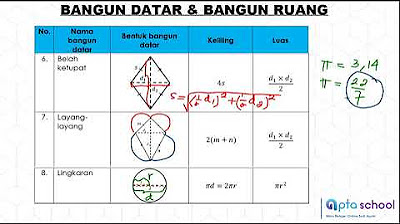moment of inertia
Summary
TLDRThis educational video explores the concept of moment of inertia through various shapes, including solid spheres, solid cylinders, and hollow cylinders. It explains how moment of inertia affects rotational motion and is influenced by mass distribution and radius. By comparing different objects, the video highlights that a solid sphere has the least moment of inertia, allowing it to roll down a ramp faster than the other shapes. The video emphasizes the importance of understanding moment of inertia in physics and its applications in real-world scenarios.
Takeaways
- 😀 Rolling objects on a ramp: A solid sphere, solid cylinder, and hollow cylinder with the same mass will reach the bottom at different times due to their moment of inertia.
- 🌀 Understanding moment of inertia: This scalar value indicates how difficult it is to change an object's rotational velocity based on its mass distribution.
- ⚖️ Greater radius equals greater inertia: A wheel with a larger radius (like wheel A) has a greater moment of inertia than a smaller radius (like wheel B), making it harder to accelerate.
- 🔍 Moment of inertia formula: For a wheel, the moment of inertia is calculated using the formula I = MR², where I is the moment of inertia, M is mass, and R is radius.
- 📈 Mass and inertia correlation: As the mass of an object increases, its moment of inertia also increases, making it harder to rotate.
- 📏 Radius impact on inertia: Two wheels with the same mass but different radii will have different moments of inertia, affecting their rotational acceleration.
- 🔄 Axis of rotation matters: The moment of inertia changes depending on the axis about which an object rotates, as seen in the example of a spinning rod.
- 🪄 Easy vs. hard to rotate: A rod is easier to spin when held at its center compared to its end, demonstrating the influence of mass distribution on inertia.
- 📊 Moment of inertia formulas vary: Different shapes have unique formulas to calculate their moment of inertia, reflecting their mass distribution.
- 🏆 Conclusion: Among a solid sphere, solid cylinder, and hollow cylinder, the solid sphere has the least moment of inertia and thus reaches the bottom of the ramp first.
Q & A
What is moment of inertia?
-Moment of inertia is a scalar value that measures how difficult it is to change the rotational velocity of an object about a specific axis.
How does mass affect moment of inertia?
-As the mass of an object increases, its moment of inertia also increases, making it harder to rotate.
What are the formulas for moment of inertia for different shapes?
-The formulas are: solid sphere: (2/5) M r²; solid cylinder: (1/2) M r²; hollow cylinder: M r².
Which object reaches the bottom of a ramp first: a solid sphere, a solid cylinder, or a hollow cylinder?
-The solid sphere reaches the bottom first because it has the smallest moment of inertia among the three.
How does the radius of an object influence its moment of inertia?
-An increase in radius results in a greater moment of inertia, making it harder to rotate the object.
What happens to the moment of inertia when the axis of rotation changes?
-The moment of inertia varies depending on where the axis of rotation is placed; rotating a rod about its center is easier than rotating it about one end.
How is moment of inertia calculated for a rod?
-For a rod, the moment of inertia about its center is calculated using the formula (1/12) M L², and about an end using (1/3) M L².
What role does mass distribution play in moment of inertia?
-The distribution of mass relative to the axis of rotation significantly affects moment of inertia; more mass farther from the axis increases it.
Why is it harder to spin a rod from the end compared to the center?
-It is harder to spin a rod from the end because all the mass is distributed farther from the axis of rotation, resulting in a greater moment of inertia.
Can moment of inertia be described as a property of any rotating object?
-Yes, moment of inertia is a property of any object that can be rotated and indicates how resistant it is to changes in its rotational motion.
Outlines

This section is available to paid users only. Please upgrade to access this part.
Upgrade NowMindmap

This section is available to paid users only. Please upgrade to access this part.
Upgrade NowKeywords

This section is available to paid users only. Please upgrade to access this part.
Upgrade NowHighlights

This section is available to paid users only. Please upgrade to access this part.
Upgrade NowTranscripts

This section is available to paid users only. Please upgrade to access this part.
Upgrade NowBrowse More Related Video
5.0 / 5 (0 votes)





